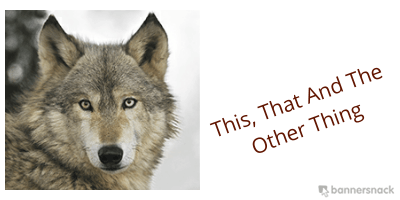My nephew had a pig butchered and I was offered some fat to "render" and turn into lard.
I gladly accepted and gave it a go. I've learned a lot... particularly that many people have different ways they go about this, from just cutting the fat into small cubes to running the fat through a meat grinder first.
I chose to cut the fat into strips and run it through the meat grinder. I have a small, electric grinder. Nothing fancy or expensive, but it did well enough to grind it up.
Next, some people claimed to keep it on a low heat and melt the fat slowly with a small amount of water.
Others said to use no water at all. And others claimed to put it to a higher heat.
I added a small amount of water before putting the fat in a pot. It's supposed to help keep the fat from sticking or scorching, but I believe I'd skip that and just put the fat in a pot next time.
Before I cut the fat and put it in the pot, some people claimed it was best to cut all bits of meat off the fat, while others made it clear the meat is what gives you cracklins...little bits that float to the top and get crispy after a while. I cut it all off before starting and think next time I may leave it on and see how it turns out.
(the cracklins are something people claim is really good and used in many ways...including salad toppers)
All in all, the process would have been a bit easier if I had done the rendering in smaller batches. I had a lot of fat!
So, I put the fat on a low heat and kept a watch on it. What I did learn is that it takes a LONG time and taking some out too soon and thinking it's done is not a good thing! I ended up putting all I had done back into a pot the next day and leaving it at a bit higher temperature and waiting longer for the fat to lose all water and separate more impurities out for the lard to set and be a nice white color.
I now have several jars of lard. It can be used for cooking and baking and in soap making and many other ways.
As is, it will last a year or longer and I am so glad I got it done! :)
I forgot to take pictures but will try to post one of the finished product.
I gladly accepted and gave it a go. I've learned a lot... particularly that many people have different ways they go about this, from just cutting the fat into small cubes to running the fat through a meat grinder first.
I chose to cut the fat into strips and run it through the meat grinder. I have a small, electric grinder. Nothing fancy or expensive, but it did well enough to grind it up.
Next, some people claimed to keep it on a low heat and melt the fat slowly with a small amount of water.
Others said to use no water at all. And others claimed to put it to a higher heat.
I added a small amount of water before putting the fat in a pot. It's supposed to help keep the fat from sticking or scorching, but I believe I'd skip that and just put the fat in a pot next time.
Before I cut the fat and put it in the pot, some people claimed it was best to cut all bits of meat off the fat, while others made it clear the meat is what gives you cracklins...little bits that float to the top and get crispy after a while. I cut it all off before starting and think next time I may leave it on and see how it turns out.
(the cracklins are something people claim is really good and used in many ways...including salad toppers)
All in all, the process would have been a bit easier if I had done the rendering in smaller batches. I had a lot of fat!
So, I put the fat on a low heat and kept a watch on it. What I did learn is that it takes a LONG time and taking some out too soon and thinking it's done is not a good thing! I ended up putting all I had done back into a pot the next day and leaving it at a bit higher temperature and waiting longer for the fat to lose all water and separate more impurities out for the lard to set and be a nice white color.
I now have several jars of lard. It can be used for cooking and baking and in soap making and many other ways.
As is, it will last a year or longer and I am so glad I got it done! :)
I forgot to take pictures but will try to post one of the finished product.









